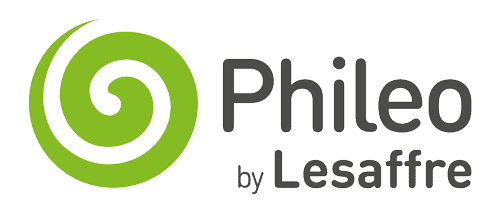
Actisaf® helps improve flock performance from forage
"Having the Actisaf® probiotic yeast in the feed bucket definitely helps as well, as it enhances how the rumen of the ewe functions by improving fibre digestion…"About This Project
Farming at Tucks Farm, near Charlcutt in Wiltshire, John and Louise have around 500 Texel x Wiltshire Horn ewes and sell the lambs as stores, with a few being finished on farm. Traditionally, the couple would have run a high-input flock, with high concentrate use around lambing along with the forage source. Yet in the last year that approach has completely changed, and they have now moved to a system that relies on high forage use and no supplementary concentrate feed, other than feed blocks, which are supplied by Chris Willett at Dallas Keith in Witney, Oxfordshire.
“We had several issues with the old system, which motivated us to change,” explained John. “Our primary reason was to try to increase our margins, as feed prices were having a big impact on overall profitability. We were also seeing an unacceptable level of prolapses – 31 in the 2014/15 season, which was frustrating.”
John and Louise have changed ewe breeding as well as changing to late tupping in December, resulting in a late lambing period in May. Ewes are fed a high forage diet based on hay throughout the winter, along with a high energy and protein feed block from Dallas Keith, which contains Actisaf® premium yeast probiotic, and which is available ad lib for the last 6 weeks prior to lambing.
In this new system, it is important to maximise the use and digestibility of home-grown forage, to ensure adequate energy intakes for the ewe and her lambs, as well as for milk production.
“We aim to lamb outside,” John said. “We have very wet, heavy ground, so we tend to have to house in January and February, but it grows plenty of grass, so it means we can paddock graze the ewes and lambs and our focus is to develop the lamb off grazed grass. Having the Actisaf® probiotic yeast in the feed bucket definitely helps as well, as it enhances how the rumen of the ewe functions by improving fibre digestion, meaning that there is more energy available. This is important as the energy requirement of the ewe is higher at this time, yet dry matter intakes are typically reduced.”
One of the things that John particularly noticed was how ewes seemed to settle post-lambing. “Because we don’t feed concentrate now we are very reliant on ewes getting enough energy from forage, which can be challenging when ewes are heavily in lamb because of the limits on intake as the lambs are pressing on the rumen. I’m confident that Actisaf® helped in this regard, by increasing fibre digestion from forage and, therefore, energy availability, resulting in increased utilisation of forage. It was great to see our ewes settle very well and have plenty of milk, which supported early lamb growth.”
As well as seeing a marked reduction in prolapses since adopting the new management approach, with only three in 2016, John is also pleased with the results. “On our previous system the best we ever achieved was 2.2 lambs sold/ewe, but that came with cost and hassle. On the new system, we achieved 1.75 lambs sold/ewe last year and 1.6 this year but margins are improved, lambing went more smoothly, and we have been pleased with the way the lambs have grown.”






